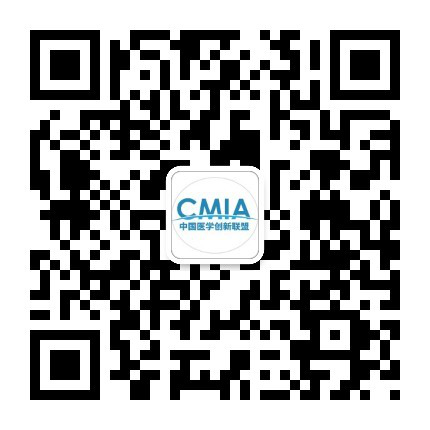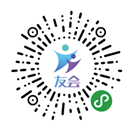青霉素和苄星青霉素,你了解吗
一、用法用量
常规剂量范围:IM,IV: 1200〜2400万单位/日,以q4-6h给药
1. 放线菌种:Ⅳ:
宫颈病:100〜600万单位/日,以q4-6h给药
胸部和腹部疾病:1000〜2000万单位/日,以q4-6h给药
2. 炭疽:Ⅳ:
至少800万单位/日,q6h,是否调整剂量取决于炭疽杆菌对药物的敏感性。
3. 梭菌属:IV:
说明书建议:肉毒杆菌,气性坏疽,破伤风:2000万单位/日,以q4-6h给药; 肉毒杆菌和破伤风的辅助治疗(如肉毒杆菌毒素,破伤风免疫球蛋白)也被推荐使用。
其他建议:皮肤和软组织坏死性感染(超适应症用药):200-400万单位 q4-6h给药; 与克林霉素联合使用,当患者无需清创,临床症状有所改善,48〜72小时无发热情况下,可考虑停药(IDSA [Stevens 2014])
4. 抗毒素辅助治疗和预防病原携带状态):
IV:200〜300万单位/日,以q4-6h给药,疗程10〜12天
5. 心内膜炎,治疗:IV:
肠球菌,天然或人工瓣膜(青霉素敏感/庆大霉素敏感株)(超剂量使用):需联合庆大霉素,青霉素连续输注1800-3000万单位/天,或q4h给药。疗程:4周(天然瓣膜和症状存在<3个月); 6周(天然瓣膜和症状≥3个月或人工瓣膜)(AHA [Baddour 2015])。
肠球菌,天然或人工瓣膜(青霉素敏感/链霉素敏感/庆大霉素抗性菌株)(超剂量使用):需联合链霉素,青霉素连续输注1800-3000万单位/天,或q4h给药。疗程:4周(天然瓣膜和症状存在<3个月); ≥6周(天然瓣膜和症状存在≥3个月或人工瓣膜)(AHA [Baddour 2015))。
红斑丹毒丝菌:1200万-2000万单位/天,以q4h-q6g给药,疗程4-6周
单核细胞增多性李斯特菌:1500万-2000万单位/天,以q4h-q6g给药,疗程4-6周
草绿色链球菌(VGS)和牛分枝杆菌(超剂量使用)(AHA [Baddour 2015]):
天然瓣膜:青霉素敏感(MIC≤0.12mcg/ mL):青霉素连续输注1200-1800万单位/天,或分成每4或6小时给药,疗程4周;或联合庆大霉素,青霉素连续输注1200-1800万单位/天,或分成每6小时给药,疗程2周;
天然瓣膜:青霉素中介(MIC> 0.12至<0.5mcg / mL):连续输注2400万单位/天,或者分成每4或6小时给药,疗程4周,前两周联合使用庆大霉素
人工瓣膜:青霉素敏感(MIC≤0.12mcg/ mL):连续输注2400万单位/日,或分成每4或6小时,疗程6周(前两周联用或无联用庆大霉素)
人工瓣膜:青霉素中介或耐药(MIC> 0.12 mcg / mL):连续输注2400万单位/天,或分成每4或6小时,联用庆大霉素,疗程6周
6. 丹毒(超剂量使用):IV:
1000〜2000万单位/日,分成每4〜6小时,当患者退热后调整为口服青霉素(Bonnetblanc 2003)
7. 梭菌螺旋体病(包括文森特病):IV:
每500-1000万单位/天,分成每4至6小时给药
8. 钩端螺旋体病(超适应症):IV:
150万单位,q6h,疗程7天(Panaphut2003,Suputtamongkol2004,Watt1988)
9. 莱姆神经性神经病变(超适应症):IV:
3-4百万个单位,q4h (Halperin 2007,Halperin 2013)
10. 脑膜炎:IV:
李斯特氏菌:1500至2000万单位/日,分成每4至6小时给药
脑膜炎球菌:2400万单位/天,分成每2小时给药
11. 神经梅毒:IV:
说明书建议:200-400万个单位,q4h,疗程10到14天; 疗程结束后,考虑是否使用苄星青霉素G
其他建议【包括眼梅毒(超剂量使用)】:1800-2400万单位/天,分成每隔4小时(或连续输注),疗程10至14天(CDC [Workowski 2015])
12. 骨髓炎,脊椎(超适应症)(IDSA [Berbari 2015]):IV:
肠球菌属(青霉素敏感型)或链球菌(β-溶血性): 2000〜2400万单位/日,连续性输注或每4小时一次,疗程6周。注意:若患者伴发肠球菌属感染性心内膜炎(青霉素敏感),建议联用氨基糖苷4至6周。
痤疮丙酸杆菌: 2000万单位/日,连续输注或分成每4小时一次,疗程6周
13. 巴斯德氏菌感染(菌血症,脑膜炎):IV:
400〜600万单位/日,分成q4-q6h,疗程2周;
14. 假肢关节感染(超适应症):IV:
肠球菌(青霉素敏感),链球菌(β-溶血性):2000至2400万单位/天,连续输注或分成每4小时一次,疗程4至6周(Osmon 2013);注意:对于青霉素敏感的肠球菌,考虑联用氨基糖苷类。
痤疮丙酸杆菌: 2000万单位/天,连续输注或分成每4小时一次,疗程4至6周(Osmon 2013)
15. 鼠咬热(包括Haverhill fever):Ⅳ:
1200〜2000万单位/日,分成每4〜6小时,疗程3〜4周
16. 链球菌感染:IV:
B组链球菌,孕妇剂量(新生儿预防)(超说明书使用):500万单位x 1剂量,然后每4小时250-300万单位直至分娩(CDC2010)
皮肤感染,包括皮肤和软组织坏死性感染(超说明书使用):200-400万单位,q4-6h;与克林霉素联合使用,当患者无需清创,临床症状有所改善,48〜72小时无发热情况下,可考虑停药(IDSA [Stevens 2014])
A组链球菌侵袭性感染,重度:300〜400万单位,q4h,联用克林霉素持续10〜14天(Walker 2014)
17. 链球菌肺炎:IV:
1200-2400万单位/日,分成每4-6小时。注意:当肺炎链球菌MIC<2 mcg / mL时,才推荐使用(Mandell 2007)。
18. 惠普尔病(超适应症):IV:
200-400万单位,q4h,疗程2-4周,随后口服甲氧苄啶/磺胺甲恶唑单药或口服多西环素和羟氯喹1年(Bures 2013)
二、肝肾功能不全时
说明书建议:
CrCl>10 mL / min / 1.73 m2的尿毒症患者:首次给正常剂量,然后予推荐剂量的50%,q4〜5h
CrCl<10 mL / min / 1.73 m2:首次给正常剂量,然后予推荐剂量的50%,q8〜10h
其他建议:
GFR>50 mL / min:无需调整剂量(Aronoff 2007)。
GFR10-50 mL /分钟:施用75%的正常剂量(Aronoff 2007)。
GFR<10 mL /分钟:管理20%至50%的正常剂量(Aronoff 2007)。
间歇性血液透析(IHD)的终末期肾病(血透后给药)(Heintz2009):给正常剂量,随后q4-6h予正常剂量的25%〜50%,或每8〜12小时,正常剂量的50%〜100%。对于轻度至中度的感染,50-100万单位,q4-6h;或100-200万单位,q8-12h;对于神经梅毒,心内膜炎等严重感染,200万单位,q4-6h;注意:剂量的推荐是基于一周三次血透的假设上。
连续肾替代治疗(CRRT)(Heintz2009; Trotman 2005):药物清除程度主要依赖于肾脏替代方法,过滤器类型和流速。更准确的给药剂量需要密切监测药物反应,药物积累引起的不良反应迹象,以及血药浓度。以下是一般建议(基于透析液流量/超滤率1〜2L /小时和最小残留肾功能),不应取代临床判断:
CVVH:首次剂量400万,其后200单位,每4〜6小时
CVVHD:首次剂量为400万,其次为200〜300万,每4〜6小时
CVVHDF:首次剂量为400万,其次为200〜400万,每4〜6小时
肝功能受损时给药:肝损伤说明书中无剂量调整。
三、不良反应
不良反应频率未知。
心血管:局部静脉炎,局部血栓性静脉炎
中枢神经系统:昏迷(高剂量),反射亢进(高剂量),肌阵挛(高剂量),癫痫发作(高剂量)
皮肤病:接触性皮炎,皮疹
内分泌与代谢:电解质紊乱(高剂量)
胃肠道:假膜性结肠炎
血液和肿瘤学:中性粒细胞减少(罕见,高剂量)
超敏反应:过敏反应,超敏反应(即时和延迟),血清病
免疫学:Jarisch-Herxheimer反应
局部:注射部位反应
肾脏:急性间质性肾炎(高剂量),肾小管疾病(高剂量)
四、注意事项
1. 与不良影响有关的担忧:
•过敏/超敏反应
•神经血管损伤:避免动脉内给药或注射到主要周围神经或血管中或附近,因为这种注射可能导致严重和/或永久的神经血管损伤。
•二重感染:长期使用可能导致真菌或细菌超感染,包括艰难梭菌相关性腹泻(CDAD)和假膜性结肠炎;已经观察到使用> 2个月后出现CDAD。
2. 疾病相关问题:
•肾损伤:肾损伤患者需谨慎使用; 推荐剂量调整在存在伴随的肝损伤的情况下,可能需要进一步的剂量调整。
•癫痫发作:癫痫发作史患者谨慎使用;高剂量时,特别是在肾损伤的情况下,可能增加癫痫发作的风险。
3. 并发药物治疗问题:
•药物 - 药物相互作用
4. 其他警告/注意事项:
•电解质紊乱:产品含钠和钾; 高剂量治疗可能会改变血清水平。如果使用高剂量(例如,> 1000万单位),则需要调整给药速率(例如至少间歇IV输注> 30分钟)。
•静脉给药速度不宜超过50万U/每分钟,避免发生中枢神经系统感染
五、代谢/运输效应
OAT3底物
六、药物相互作用
吗替麦考酚酯:青霉素可能降低霉酚酸酯的活性代谢物的血清浓度。这种影响似乎是肠肝再循环受损的结果。风险C:监测治疗
丙磺舒:可能会增加青霉素的血清浓度。管理:避免常规使用青霉素和丙磺舒,但是在仔细监测的情况下,可以有利地使用这种组合。风险D:考虑治疗改变
特立氟胺:可能会增加OAT3底物的血清浓度。风险C:监测治疗
四环素衍生物:可能降低青霉素的治疗效果。风险D:考虑治疗改变
伤寒疫苗:抗生素可能会减少伤寒疫苗的治疗效果。管理:应用全身抗菌剂治疗的患者应避免使用活的减毒伤寒疫苗(Ty21a)接种疫苗。应将该疫苗的使用推迟至停止抗菌药
维生素K拮抗剂(如华法林):青霉素可能会增强维生素K拮抗剂的抗凝血作用。风险C:监测治疗
避孕药:通过肠肝循环减少避孕药疗效。风险C:监测治疗
甲氨蝶呤:合用可降低甲氨蝶呤的肾脏清除率,增加甲氨蝶呤的毒性。风险C:监测治疗
七、妊娠B级
在动物繁殖研究中没有观察到不良事件。青霉素G可穿过胎盘。产妇使用青霉素通常不会导致不良胎儿效应的风险增加。青霉素G是怀孕期间治疗梅毒的首选药物,青霉素G(肠胃外/水性)是预防新生儿早发B型链球菌(GBS)疾病的首选药物(参见当前指南)(CDC( RR-10)2010;CDC [Workowski 2015])。怀孕和产后妇女的炭疽感染需要进行IV治疗时,青霉素G可用作替代药物(Meaney-Delman,2014)。
八、哺乳期
青霉素G会被分泌到母乳中。说明书建议,应谨慎使用。奶的峰值浓度会发生在IM后约1小时,如果多次给药,则浓度较高(Greene 1946; Matsuda 1984)。非剂量相关性可能包括肠道菌群的改变和变应性致敏。
八、监测参数
长期/高剂量治疗期间的电解质,肝,肾,心脏和血液学功能测试; 观察第一次给药期间过敏反应的体征和症状
九、作用机制
干扰细菌细胞壁合成,引起细胞壁死亡,对易感染细菌产生杀菌活性
十、药效学/动力学
分布:血脑屏障渗透率较差,除脑膜炎外
从血液到脑脊液的相对扩散:除非脑膜发炎(超过常规MIC)
CSF/血:脑膜炎:2%〜6%
半衰期:
新生儿:<6日龄:3.1小时; ≥14天龄:1.4小时
成人:正常肾功能:31〜50分钟
终末期肾病(ESRD):6〜20小时(Aronoff 2007)
血清达峰值:IV:输液后立即
排泄:尿液(58%至85%为未改变药物)
参考文献
1. American College of Obstetricians and Gynecologists,“ACOG CommitteeOpinion: Number 279, December 2002. Prevention of Early-Onset Group BStreptococcal Disease in Newborns,” Obstet Gynecol, 2002, 100(6):1405-12.
2. American Academy of Pediatrics (AAP). In: Kimberlin DW, Brady MT,Jackson MA, Long SA, eds; Red Book: 2015 Report of the Committee on InfectiousDiseases. 30th ed. Elk Grove Village, IL: American Academy of Pediatrics; 2015.
3. American Academy of Pediatrics Committee on Infectious Diseases,“Treatment of Bacterial Meningitis,” Pediatrics, 1988, 81(6):904-7. [PubMed3368290]
4. Aronoff GR, Bennett WM, Berns JS, et al. Drug Prescribing in RenalFailure: Dosing Guidelines for Adults and Children. 5th ed. Philadelphia, PA:American College of Physicians; 2007.
5. Baddour LM, Wilson WR, Bayer AS, et al; American Heart AssociationCommittee on Rheumatic Fever, Endocarditis, and Kawasaki Disease of the Councilon Cardiovascular Disease in the Young, Council on Clinical Cardiology, Councilon Cardiovascular Surgery and Anesthesia, and Stroke Council. Infectiveendocarditis in adults: diagnosis, antimicrobial therapy, and management ofcomplications: a scientific statement for healthcare professionals from theAmerican Heart Association [published correction appears in Circulation.2015;132(17):e215]. Circulation. 2015;132(15):1435-1486. [PubMed 26373316]
6. Berbari EF, Kanj SS, Kowalski TJ, et al; Infectious DiseasesSociety of America. 2015 Infectious Diseases Society of America (IDSA) ClinicalPractice Guidelines for the diagnosis and treatment of native vertebralosteomyelitis in adults. Clin Infect Dis. 2015;61(6):26-46. [PubMed 26229122]
7. Bonnetblanc JM, Bédane C. Erysipelas: recognition and management.Am J Clin Dermatol. 2003;4(3):157-163. [PubMed 12627991]
8. Bradley JS, Byington CL, Shah SS, et al. “The Management ofCommunity-Acquired Pneumonia in Infants and Children Older Than 3 Months ofAge: Clinical Practice Guidelines by the Pediatric Infectious Diseases Societyand the Infectious Diseases Society of America”, Clin Infect Dis, 2011,53(7):e25-76. [PubMed 21880587]
9. Bureš J, Kopáčová M, Douda T, et al. Whipple's disease: our ownexperience and review of the literature. Gastroenterol Res Pract.2013;2013:478349. [PubMed 23843784]
10. Centers for Disease Control and Prevention (CDC). Prevention ofperinatal Group B Streptococcal Disease, Revised Guidelines from CDC, 2010.MMWR Recomm Rep. 2010;59(RR-10):1-32. [PubMed 21088663]
11. DHHS Panel on Opportunistic Infections in HIV-Exposed andHIV-Infected Children. Guidelines for the Prevention and Treatment ofOpportunistic Infections in HIV-Exposed and HIV-Infected Children. Departmentof Health and Human Services. November 2013. Available athttp://aidsinfo.nih.gov/contentfiles/lvguidelines/oi_guidelines_pediatrics.pdf.
12. DHHS Panel on Opportunistic Infections in HIV-Infected Adults andAdolescents. Guidelines for the prevention and treatment of opportunisticinfections in HIV-infected adults and adolescents: recommendations from theCenters for Disease Control and Prevention, the National Institutes of Health,and the HIV Medicine Association of the Infectious Diseases Society of America.October 2014. Available athttp://aidsinfo.nih.gov/contentfiles/lvguidelines/adult_oi.pdf. AccessedNovember 12, 2014
13. Donowitz GR and Mandell GL, “Beta-Lactam Antibiotics,” N Engl JMed, 1988, 318(7):419-26 and 318(8):490-500. [PubMed 3277054]
14. Durand DV, Lecomte C, Cathébras P, Rousset H, Godeau P. Whippledisease. Clinical review of 52 cases. The SNFMI Research Group on whipple disease.Société Nationale Française de Médecine Interne. Medicine (Baltimore).1997;76(3):170-184. [PubMed 9193452]
15. Gilbert DN, Moellering RC, Eliopoulos GM, et al, eds, The SanfordGuide To Antimicrobial Therapy, 2006, 36th ed, Hyde Park, VT: AntimicrobialTherapy, Inc, 2006, 6-7.
16. Greene HJ, Burkhart B, Hobby GL. Excretion of penicillin in humanmilk following parturition. Am J Obstet Gyn. 1946;51:732-733. [PubMed 21025164]
17. Halperin JJ. Nervous system lyme disease: diagnosis and treatment.Curr Treat Options Neurol. 2013;15(4):454-464. [PubMed 23666548]
18. Halperin JJ, Shapiro ED, Logigian E, et al; Quality StandardsSubcommittee of the American Academy of Neurology. Practice parameter:treatment of nervous system Lyme disease (an evidence-based review): report ofthe Quality Standards Subcommittee of the American Academy of Neurology.Neurology. 2007;69(1):91-102.
19. Hansen JM, Kampmann J, and Laursen H, “Renal Excretion of Drugs inthe Elderly,” Lancet, 1970, 1(657):1170.
20. Heintz BH, Matzke GR, Dager WE. Antimicrobial dosing concepts andrecommendations for critically ill adult patients receiving continuous renalreplacement therapy or intermittent hemodialysis. Pharmacotherapy.2009;29(5):562-577. [PubMed 19397464]
21. Hossain MA, Friciu M, Aubin S, Leclair G. Stability of penicillin Gsodium diluted with 0.9% sodium chloride injection or 5% dextrose injection andstored in polyvinyl chloride bag containers and elastomeric pump containers. AmJ Health Syst Pharm. 2014;71(8):669-673. [PubMed 24688042]
22. Leikola E and Vartia KO, “On Penicillin Levels in Young andGeriatric Subjects,” J Gerontol, 1957, 12:48-52. [PubMed 13398605]
23. Mandell LA, Wunderink RG, Anzueto A, at al; Infectious DiseasesSociety of America; American Thoracic Society. Infectious Diseases Society ofAmerica/American Thoracic Society consensus guidelines on the management ofcommunity-acquired pneumonia in adults. Clin Infect Dis. 2007;44(Suppl2):S27-S72. [PubMed 17278083]
24. Matsuda S. Transfer of antibiotics into maternal milk. Biol ResPregnancy Perinatol. 1984;5(2):57-60. [PubMed 6743732]
25. Meaney-Delman D, Zotti ME, Creanga AA, et al. Specialconsiderations for prophylaxis for and treatment of anthrax in pregnant andpostpartum women. Emerg Infect Dis. 2014;20(2). [PubMed 24457117]
26. Nishimura RA, Otto CM, Bonow RO, et al, 2014 AHA/ACC Guideline forthe Management of Patients with Valvular Heart Disease: executive summary: areport of the American College of Cardiology/American Heart Association TaskForce on Practice Guidelines. Circulation. 2014;129(23):2440-92. doi:10.1161/CIR.0000000000000029. [PubMed 24589852]
27. Osmon DR, Berbari EF, Berendt AR, et al. Diagnosis and managementof prosthetic joint infection: Clinical Practice Guideline by the InfectiousDiseases Society of America. Clin Infect Dis. 2013;56(1):1-25. [PubMed23223583]
28. Panaphut T, Domrongkitchaiporn S, Vibhagool A, Thinkamrop B,Susaengrat W. Ceftriaxone compared with sodium penicillin g for treatment ofsevere leptospirosis. ftriaxone compared with sodium penicillin g for treatmentof severe leptospirosis. Clin Infect Dis. 2003;36(12):1507-1513. [PubMed12802748]
29. Penicillin G Potassium Injection [prescribing information].Deerfield, IL: Baxter Healthcare Corporation; June 2014. [PubMed 23223583]
30. Pfizerpen [prescribing information]. New York, NY: Roerig; October2014.
31. Prober CG, Stevenson DK, and Benitz WE, “The Use of Antibiotics inNeonates Weighing Less Than 1200 Grams,” Pediatr Infect Dis J, 1990,9(2):111-21. [PubMed 2179837]
32. Quagliarello VJ and Scheld WM, “Treatment of Bacterial Meningitis,”N Engl J Med, 1997, 336(10):708-16. [PubMed 9041103]
33. Schneider T, Moos V, Loddenkemper C, Marth T, Fenollar F, Raoult D.Whipple's disease: new aspects of pathogenesis and treatment. Lancet InfectDis. 2008;8(3):179-190. [PubMed 18291339]
34. Schrag S, Gorwitz R, Fultz-Butts K, et al, “Prevention of PerinatalGroup B Streptococcal Disease. Revised Guidelines from CDC,” MMWR, Recomm Rep,51(RR11):1-22. [PubMed 12211284]
35. Stevens DL, Bisno AL, Chambers HF, et al. Practice guidelines forthe diagnosis and management of skin and soft tissue infections: 2014 update bythe infectious diseases society of America [published online June 18, 2014].Clin Infect Dis. 2014;59(2):e10-52. doi: 10.1093/cid/ciu296. [PubMed 24947530]
36. Suputtamongkol Y, Niwattayakul K, Suttinont C, et al. An open,randomized, controlled trial of penicillin, doxycycline, and cefotaxime forpatients with severe leptospirosis.Clin Infect Dis. 2004;39(10):1417-1424.[PubMed 15546074]
37. Trotman RL, Williamson JC, Shoemaker DM, et al. Antibiotic dosingin critically ill adult patients receiving continuous renal replacementtherapy. Clin Infect Dis. 2005;41(8):1159-1166. [PubMed 16163635]
38. Tunkel AR, Hartman BJ, Kaplan SL, et al, “Practice Guidelines forthe Management of Bacterial Meningitis,” Clin Infect Dis, 2004, 39(9):1267-84.[PubMed 15494903]
39. Vinetz JM. A mountain out of a molehill: do we treat acuteleptospirosis, and if so, with what? Clin Infect Dis. 2003;36(12):1514-1515.[PubMed 12802749]
40. Walker MJ, Barnett TC, McArthur JD, et al. Disease manifestationsand pathogenic mechanisms of Group A Streptococcus. Clin Microbiol Rev.2014;27(2):264-301. [PubMed 24696436]
41. Watt G, Padre LP, Tuazon ML. Placebo-controlled trial ofintravenous penicillin for severe and late leptospirosis. Lancet.1988;1(8583):433-435.[PubMed 2893865]
42. Wickerts CJ, Asaba H, Gunnarsson B, et al, “Combined CarbonHaemoperfusion and Haemodialysis in the Treatment of Penicillin Intoxication,”Br Med J, 1980, 280(6226):1254-5.
43. Workowski KA, Bolan GA; Centers for Disease Control and Prevention(CDC). Sexually transmitted diseases treatment guidelines, 2015 [publishedcorrection appears in MMWR Recomm Rep. 2015;64(33):924]. MMWR Recomm Rep.2015;64(RR-03):1-137. [PubMed 26042815]
44. World Health Organization; International Leptospirosis Society.Human leptospirosis: guidance for diagnosis surveillance and control. WorldHealth Organization.
45. Wright AJ, “The Penicillins,” Mayo Clin Proc, 1999, 74(3):290-307.[PubMed 10090000]
46. Yoshikawa TT, “Antimicrobial Therapy for the Elderly Patient,” J AmGeriatr Soc, 1990, 38(12):1353-72. [PubMed 2254575]
苄星青霉素
不适用于静脉注射(IV)使用,不能同其他IV溶液混合。有报道称,苄星青霉素IV给药与心脏呼吸骤停和死亡有关。给药前尽量使药物接近体温,减轻疼痛。
一、用法用量
常用剂量范围:IM:单剂量120〜240万单位
1. 上呼吸道感染,A组链球菌:IM:120万单位,单剂量给药
第二次预防肾小球性肾炎:每四周,120万单位;或每月两次,60万单位
第二次预防预防风湿热:每3〜4周,120万单位,或每月两次,60万单位(Gerber,2009)
2. 咽炎,A组链球菌(IDSA指南):IM:
急性治疗:单次剂量120万单位(Shulman,2012)
慢性携带者治疗:单次剂量120万单位,联合口服利福平(Shulman,2012)
3. 梅毒(CDC [Workowski 2015]):IM:
首次,第二次,早期潜伏期(<1年):单剂量240万单位
晚期潜伏期,持续时间未知的潜伏期或第三次感染梅毒(正常脑脊液检查):每周一次,每次240万单位,持续三周
神经梅毒(包括眼梅毒):未注明使用剂量和疗程;水性青霉素G是初始治疗,但可以考虑在青霉素IV治疗后每周一次苄星青霉素给予240万单位IM,持续3周,保证与潜伏梅毒相当的治疗总时间
二、肝肾功能不全调整
无需调整
三、注意事项
1. 与不良反应相关
超敏反应和二重感染
2. 与疾病相关
肾功能损伤时使用需谨慎;
癫痫史需谨慎使用,尤其是在合并肾损伤的情况下,可能会增加癫痫发作的风险。
梅毒/神经梅毒:CDC和AAP目前不推荐使用苄星青霉素作为先天性梅毒或神经梅毒的初始治疗方案,因为有报告表明易导致治疗失败和有效的临床资料缺乏(CDC [Workowski 2015])。
四、代谢和转运
OAT3的底物
五、相互作用
同青霉素
六、妊娠期
在动物繁殖研究中没有观察到不良事件。苄星青霉素易通过胎盘(Nathan 1993; Weeks 1997)。产妇使用青霉素通常不会导致不良胎儿效应的风险增加。青霉素G是怀孕期间治疗梅毒的首选药物(CDC [Workowski 2015])。
七、哺乳期
同青霉素
八、监测参数
第一次给药时的过敏反应
九、作用机制
同青霉素
十、药动学/药效学
持续时间:1至4周(剂量依赖性); 更大的剂量导致持续时间更长
吸收:IM:慢
分布:CSF发炎或未发炎脑膜达到最小浓度; 肾脏最高水平; 肝脏,皮肤,肠内少量
蛋白结合:〜60%
血清峰值时间:12〜24小时; 根据剂量,1至4周内的血清水平通常可检测; 较大的剂量持续时间更长而不是更高的水平
排泄:肾小管排泄; 在单次IM注射后,青霉素G在尿液中可检测时限长达12周; 新生儿,年轻婴儿和肾功能受损患者,肾清除延迟
备注:关于临床皮试
苄星青霉素皮试的观点,大致有以下几种观点1.大多数人认为苄星青霉素与普通青霉素一样,可引起过敏性休克,要求每次使用前均做皮试。观点2.有人认为换批号或者使用不同单位生产的苄星青霉素前必须做,同一批号的1周内可以不做。观点
3. 也有人认为苄星青霉素为一长效青霉素,一般有效血浓度可达1个月或更长。由于普通青霉素半衰期短,故3天后就须做皮肤试验。而苄星青霉素就不同,半个月内血浓度仍远远大于皮试浓度,可维持1个月或更长,所以1个月内不必做皮试。
考虑到过敏机制的形成,建议为防止苄星青霉素引起的过敏反应,超过3d,建议临床在每次使用前均做皮试。
由于不同的青霉素都能形成含有相同的青霉噻唑基团的衍生物,因此它们具有共同的抗原决定簇,也就是说,不同的青霉素之间能发生强烈的交叉过敏反应。基于这个观点,有些单位采用普通青霉素代替苄星青霉素做皮肤试验,但是由于青霉素生产工艺,生产厂的技术水平不同,产品中的高分子杂质含量也不同,就算是同一厂家的产品,由于生产批次和贮存条件不同也有区别,因些,苄星青素做皮试时最好用原药液,并新鲜配制,且不得久贮。
参考文献
1. Bicillin L-A(penicillin G benzathine) [prescribing information]. New York, NY: Pfizer;October 2015.
2. Cohen V, Jellinek SP,Teperikidis L, et al, “Room-Temperature Storage of Medications Labeled forRefrigeration,” Am J Health-Syst Pharm, 2007, 64(16):1711-15. [PubMed 17687059]
3. Collart P, Poitevin M,Milovanovic A, et al, “Kinetic Study of Serum Penicillin Concentrations AfterSingle Doses of Benzathine and Benethamine Penicillins in Young and OldPeople,” Br J Vener Dis, 1980, 56(6):355-62. [PubMed 7448577]
4. DHHS Panel onOpportunistic Infections in HIV-Exposed and HIV-Infected Children. Guidelinesfor the Prevention and Treatment of Opportunistic Infections in HIV-Exposed andHIV-Infected Children. Department of Health and Human Services. November 2013.Available at http://aidsinfo.nih.gov/contentfiles/lvguidelines/oi_guidelines_pediatrics.pdf.
5. DHHS Panel onOpportunistic Infections in HIV-Infected Adults and Adolescents. Guidelines forthe prevention and treatment of opportunistic infections in HIV-infected adultsand adolescents: recommendations from the Centers for Disease Control andPrevention, the National Institutes of Health, and the HIV Medicine Associationof the Infectious Diseases Society of America. October 2014. Available athttp://aidsinfo.nih.gov/contentfiles/lvguidelines/adult_oi.pdf. Accessed November12, 2014
6. Gerber MA, BaltimoreRS, Eaton CB, et al, “Prevention of Rheumatic Fever and Diagnosis and Treatmentof Acute Streptococcal Pharyngitis: A Scientific Statement From the AmericanHeart Association Rheumatic Fever, Endocarditis, and Kawasaki Disease Committeeof the Council on Cardiovascular Disease in the Young, the InterdisciplinaryCouncil on Functional Genomics and Translational Biology and theInterdisciplinary Council on Quality of Care and Outcomes Research: Endorsed bythe American Academy of Pediatrics,” Circulation, 2009, 119(11):1541-51.[PubMed 19246689]
7. Gould FK, Denning DW,Elliott TS, et al, “Guidelines for the Diagnosis and Antibiotic Treatment ofEndocarditis in Adults: A Report of the Working Party of the British Society forAntimicrobial Chemotherapy,” J Antimicrob Chemother, 2012, 67(2):269-89.[PubMed 22086858]
8. Kaplan EL, Berrios X,Speth J, et al, “Pharmacokinetics of Benzathine Penicillin G: Serum LevelsDuring the 28 Days After Intramuscular Injection of 1,200,000 Units,” JPediatr, 1989, 115(1):146-50. [PubMed 2738782]
9. Nathan L, Bawdon RE,Sidawi JE, Stettler RW, McIntire DM, Wendel GD Jr. Penicillin levels followingthe administration of benzathine penicillin G in pregnancy. Obstet Gynecol.1993;82(3):338-342. [PubMed 8355931]
10. Shulman ST, Bisno AL,Clegg HW, et al, “Clinical Practice Guideline for the Diagnosis and Managementof Group A Streptococcal Pharyngitis: 2012 Update by the Infectious DiseasesSociety of America,” Clin Infect Dis, 2012, 55(10):e86-102. [PubMed 22965026]
11. Weeks JW, Myers SR,Lasher L, Goldsmith J, Watkins C, Gall SA. Persistence of penicillin Gbenzathine in pregnant group B streptococcus carriers. Obstet Gynecol.1997;90(2):240-243. [PubMed 9241301]
12. Workowski KA, Bolan GA;Centers for Disease Control and Prevention (CDC). Sexually transmitted diseasestreatment guidelines, 2015 [published correction appears in MMWR Recomm Rep.2015;64(33):924]. MMWR Recomm Rep. 2015;64(RR-03):1-137. [PubMed26042815]

精彩评论
相关阅读






 打赏
打赏


















 010-82736610
010-82736610
 股票代码: 872612
股票代码: 872612






 京公网安备 11010802020745号
京公网安备 11010802020745号
